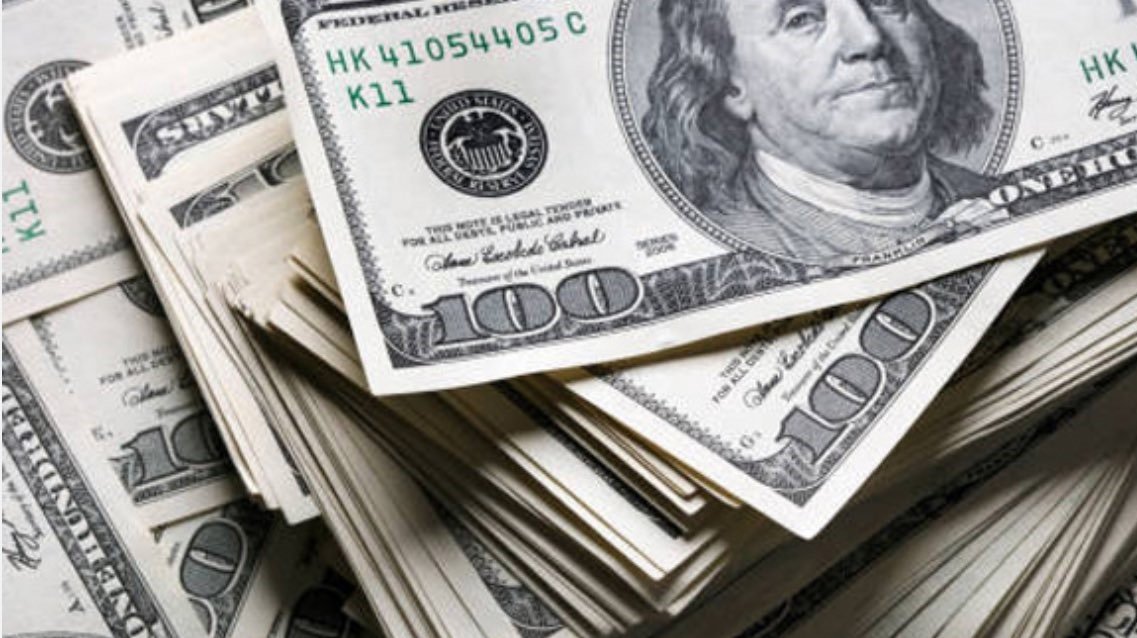
ECONOMYNEXT – WindForce Plc said Fitch Ratings Lanka Ltd had assigned a ‘BBB+(lka)’ rating for the company with stable outlook.
“The rating reflects WindForce’s large exposure to Ceylon Electricity Board (CEB, BB+(1ka)/Stable) as the key offtaker. The Stable Outlook reflects Fitch Ratings’ view that risks of significant payment delays from CEB to WindForce has decreased, easing liquidity pressure,” the company said in a stock exchange filing.
The full Rating Action Commentary by Fitch Ratings Lanka Ltd:
Fitch Publishes Sri Lanka’s WindForce’s ‘BBB+(Ika)’ National Rating; Outlook Stable.
Fitch Ratings – Colombo – 22 May 2024: Fitch Ratings has published Sri Lanka-based independent power producer WindForce PLC’s ‘BBB+(Ika}’ National Long-Term Rating. The Outlook is Stable.
The rating reflects WindForce’s large exposure to Ceylon Electricity Board (CEB, BB+ (Ika)/Stable) as the key offtaker. The Stable Outlook reflects our view that risks of significant payment delays from CEB to WindForce has decreased, easing liquidity pressure. However, Fitch believes medium-term risks to weaker collections of CEB’s dues
remain, and this is subject to the consistent implementation of CEB’s cost-reflective tariff mechanism.
Key rating drivers
Improving Receivables Collection: We expect WindForce’s receivable days to remain at around 80 in next 12 months. This is based on our expectation that CEB will continue to settle its payables, following improvement in its financial profile from cost-reflective tariff revisions. WindForce’s receivable days fell to around 198 days by December 2023, from 348 days at the end of the financial year 31 March 2023 (FY23). The company says it received further payments in 1Q24 that improved its receivables materially.
Weak Counterparty Profile: WindForce’s rating is constrained by the weak credit profile of its key offtaker CEB, the sole electricity transmitter and distributor in Sri Lanka, despite CEB’s improved financial performance. CEB’s rating is ultimately contingent upon support from the Sri Lankan sovereign (Long-Term Local-Currency Issuer Default Rating (IDR): CCC-; Long-Term Foreign-Currency IDR: Restricted Default) and its weak credit profile.
WindForce derived an average 80% of its EBIT from CEB in FY23-9MFY 724, with balance coming from its Ugandan operations. We expect WindForce’s cash flow exposure to CEB to increase further in FY25-FY27 with the commissioning of a 1OMW solar project in Kebithigollewa and a 1OOMW solar power plant in Hambantota in Sri Lanka.
Risks to Cost-Reflective Tariffs: Fitch believes there are risks to consistent implementation of cost-reflective tariffs, affecting the credit profile of domestic power generation companies. This is because of the government’s competing priorities: managing inflation, CEB’s financial health and the state’s own finances. We have assumed WindForce’s receivables days will deteriorate to 100 by FY27 as a result, but a longer record of consistent implementation could support a moderation of these risks.
The Sri Lankan government has implemented a cost-reflective tariff mechanism since mid-2022, to ensure CEB’s operating costs and interest obligations are covered. The new mechanism supports break-even operating cash flow for CEB, as of its latest financial year. This has enabled CEB to clear part of its overdue payments to trade creditors over the past 12 months. The tariff regulator – the Public Utilities Commission of Sri Lanka – approved lower tariffs by an average of 21.9% in its March 2024 review, which is a greater decrease than CEB’s proposal, reflecting the risks.
Investments Weigh on Free Cashflow: We estimate negative free cash flow (FCF) in FY25-FY27, due mainly to high capex and investments. This is despite improving operating cash flow from a shorter working capital cycle and newly commissioned projects. WindForce expects to invest USD12 million for the 30% stake in a LOOMW solar project in Hambantota in FY25-FY27.
Moderate Leverage; Adequate Coverage: We forecast WindForce’s EBITDA net leverage to rise to 2.5x in FY25 (QMFY24: 2.0x) and 4.2x in FY26 on higher capex. However, interest coverage should strengthen to 3.7x in FY25 (9YMFY24: 3.1x) due to falling domestic interest rates even as debt increases. Sri Lanka’s monthly Average Weighted Prime Lending Rate fell to 10% by end-April 2024, from the peak of 28% in December 2022. Around 70% of
WindForce’s loans carried variable rates as of end-2023.
Steady EBITDA Margin: We expect the EBITDA margin to remain around 70% in FY25-FY27. WindForce’s power purchase agreements (PPA) offer long-term cash flow visibility, with a weighted-average remaining contract life of around 12 years, but production volume is affected by seasonal and climatic patterns. This is mitigated by its diversified portfolio, comprising wind (74MW), solar (38MW) and hydro (15MW) power plants, totalling to 127MW excluding associates and joint ventures.
Derivation Summary
WindForce is rated two notches below domestic power producer and engineering, procurement and construction contractor Lakdhanavi Limited (‘‘A(Ika)/Stable). The difference is on account of Lakdhanavi’s larger operating scale, and geographic and business diversification.
Both Lakdhanavi and WindForce have significant exposure to CEB. However, Lakdhanavi has operations and maintenance (O&M) services, manufactures transformers and switchgears, and offers galvanizing services. We also believe CEB is likely to prioritise payments to Lakdhanavi in a stress scenario, given Lakdhanavi provides O&M services to one of Sri Lanka’s largest power plants, and is investing in a large liquefied natural gas power plant, both of which are critical to CEB’s future strategy.
Resus Energy PLC (BBB(Ika)/Stable), a domestic power producer, is rated one notch below WindForce. WindForce’s higher rating is driven by a comparatively better liquidity position with sufficient cash flow to cover near-term maturities and better diversification in power generation sources and geographies.
Vidullanka PLC (A+(Ika)/Stable) is a renewable power producer with operations in Sri Lanka (35MW) and Uganda (13MW). WindForce is rated three notches below Vidullanka, despite the latter’s smaller scale. Vidullanka has lower counterparty risk and lower exposure to CEB, as 80% of its EBIT came from its Uganda projects in FY23.
Key assumptions
Fitch’s Key Assumptions Within the Rating Case for WindForce:
– Revenue to increase by 14% in FY25, mainly driven by commissioning of 1OMW Kebithigollewa power plant and 15MW Hiruras power plant’s first full year of operation;
– EBITDA margin of around 70% in FY25 and FY26;
– Receivable days at 80 in FY25;
– Capex of LKR2.5 billion in FY25 and LKR6.0 billion in FY26;
– Investments of around LKR2.0 billion a year in FY25 and FY26 in associate companies;
– Dividend payout of 80% of prior year profit.
Rating sensitivities
Factors that could, individually or collectively, lead to positive rating action/upgrade
-A sustained and substantial reduction in counterparty risk, as reflected in a significant improvement in CEB’s credit profile.
Factors that could, individually or collectively, lead to negative rating action/downgrade
-Deterioration in liquidity, including due to delayed receivables collection or challenges in refinancing;
-EBITDA net leverage above 5.5x for a sustained period;
-EBITDA interest coverage below 1.5x for a sustained period.
Liquidity and debt structure
Liquidity Subject to Counterparty Health: WindForce’s liquidity is subject to timely collections of dues from CEB. It had around LKR2.9 billion readily available cash and cash equivalents as of end-2023, with around LKR6.3 billion of unused but uncommitted credit lines from domestic banks, against LKR2.2 billion of debt maturing in the next 12 months. Maturing debt mainly comprises the current portion of long-term debt obtained to fund the investments in its power plants.
We expect the company to generate negative FCF in the near-to-medium term due to high capex. However, WindForce has adequate access to domestic banks, as most banks are willing to provide longer-tenured facilities for the company’s operating power plants that have more than 10 years remaining under their PPAs.
Issuer profile
WindForce is a leading renewable power producer in Sri Lanka, with total installed power generation capacity of about 163MW (including its share of associates and joint ventures) as of end-March 2024.
